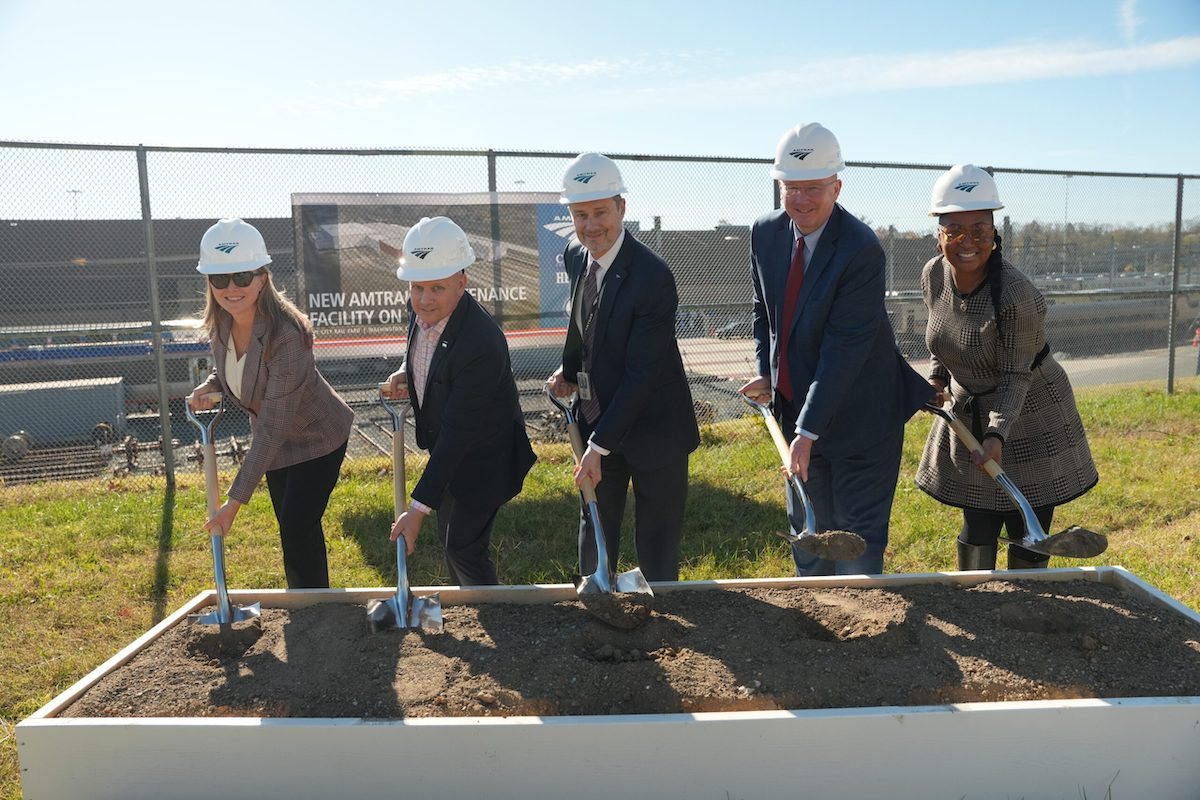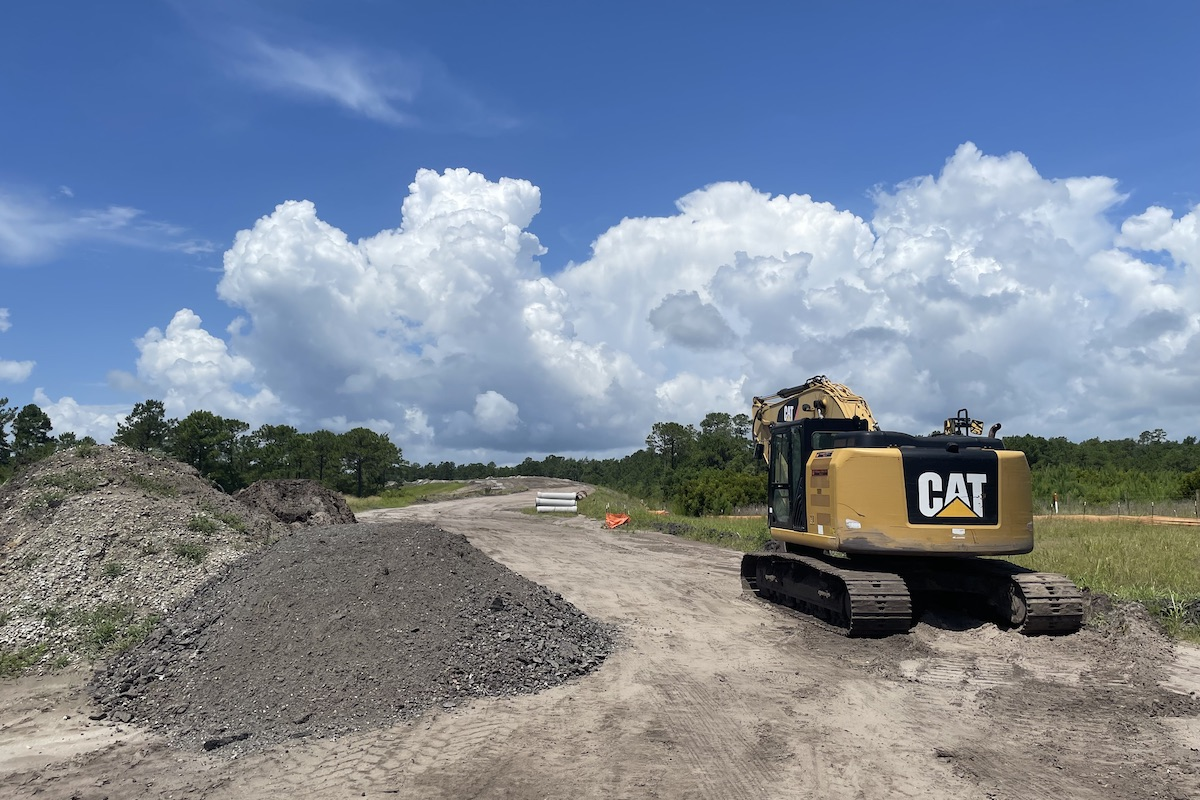Spanning across the St. John River, the original 942-foot-long four-span two-lane bridge opened in 1921. In 2020, the average daily traffic on the bridge was 2,220, and it is expected to rise to 4,080 by 2040.
The aging bridge was posted at five tons, the typical weight of a small truck. Trucks could no longer use the route and had to detour 20 miles to cross between the United States and Canada. The detour can add over one hour to the commute between the neighboring cities.
The weight restriction is particularly difficult for local businesses, including the Twin Rivers Paper Company, which employs approximately 500 workers at its mill on the United States side of the project. According to the company’s website, the mill uses “pulp integration with the softwood and groundwood pulp mills in Edmundston, NB,” and their paper complex includes the Edmundston Paper Mill. Therefore, the weight restriction on the bridge interferes with their ability to easily work with their Canadian partners.
New Brunswick’s Transportation and Infrastructure Minister Jill Green echoed this in a MaineDOT press release announcing the project. “This international bridge is more than just a piece of infrastructure; it is an important link that brings communities and countries together,” she said. “This project will contribute to our priority of energizing the private sector by facilitating the movement of people and goods. This will allow our businesses to remain competitive while fostering economic growth in the region.”

| Your local Komatsu America Corp dealer |
|---|
| Linder Industrial Machinery |
In the same press release, MaineDOT Commissioner Bruce Van Note also stressed the importance of the project and the haste to move forward. “The year-long challenges associated with the COVID-19 pandemic have laid bare the importance of the connections between Maine and Canada,” he said. “We are eager to move forward with this project to greatly improve one of these vital connection points. This new bridge will improve safety and support economic activities on both sides of the international border.”
Reed & Reed served as the general contractor for the bridge, while J & J Contractors of Massachusetts served as the general contractor for the Land Port of Entry building, under a contract administered by the U.S. General Services Administration (GSA).
As long as the bridge was in use, the active port of entry building had to remain open. The bridge is being built at a 45-degree angle to accommodate the new port of entry building. The new bridge originates/terminates at the same point on the Canadian side, but it is 600 feet upriver on the U.S. side. This gives the teams sufficient space to work while maintaining the original port of entry building on the U.S. side.
The new bridge is 1,840 feet long and has two 12-foot lanes, two 6-foot shoulders, and a 6-foot sidewalk. The bridge’s substructure consists of five concrete pier shafts, four of which are founded on four 6-foot diameter drilled shafts, and one pier founded on 36 H-piles, with concrete abutments. The bridge superstructure consists of four steel girder lines with depths between 7.5 feet and 10 feet with a 10.5-inch-thick cast-in-place stainless steel reinforced concrete deck.
Because of the weather, the construction season is short. The area often sees snow until the end of April. Ice is another challenge. “The St. John River isn’t dam controlled and has significant ice run in the spring,” said Greg Letourneau, a Senior Superintendent at Reed & Reed. Therefore, the team had to be out of the river from mid-February to mid-May. The team worked on the Maine abutment through the winter of 2021-22. During the winter of 2022-23, the team worked on forming the bridge deck.
The challenging conditions made putting a crew together more difficult. “While we hired some locals, we had to coax some of our crew in central/southern Maine to work on the project,” Letourneau said. “However, once they were on the project, many didn’t want to leave due to the community and their wonderful hospitality.”
The local community includes a significant amount of potato farmers. The lumber and forestry industry also has a significant presence in the area.
CJD Transport, a small Madawaska trucking company, handled the movement of materials. Letourneau described the experienced team as a tremendous asset.
Because of the project’s federal funding and the Build America, Buy America Act provision in the contract, Reed & Reed had to supply their Canadian counterparts with materials such as structural steel girders, stainless steel and plan concrete reinforcement steel, steel bridge rail, 10-foot diameter steel pier protection casings, and pot disk bridge bearings. Thirty percent of the materials were transferred from the U.S. to Canada. “NBDTI tracked everything that went from the U.S. to Canada,” Letourneau said. “They were helpful and expedited the process as much as possible.”
Due to the demanding construction schedule and short seasonal window for concrete placements, Reed & Reed decided to procure the concrete for the project from Canada. They built a large work trestle across the St. John River to facilitate bridge construction and movement of materials.
The team was allowed to truck materials through the trestle bridge. Otherwise, they had to go through the port of entry, which was 20 miles away. Although this was time-consuming, Letourneau said that U.S. Customs and Border Protection were helpful.
Because of their interest in the project, Reed & Reed had the project on their radar for a while. Another reason for the contractor’s interest is that they worked with the state previously and consider MaineDOT a key client.
The project began in April 2021 and is scheduled to be completed in June 2025. The anticipated completion date for the new bridge is one year earlier than the contract requires. Phase one is complete. The next two phases — demolishing the original bridge, completing construction of the second portion of the Canadian abutment, and a small corner of the new bridge deck — are on hold due to delays at GSA’s new Land Port of Entry facility.
“We have to wait until the new customs building comes on-line,” Letourneau said. The building was supposed to be completed in November 2023 but is behind schedule due to supply line issues. “We planned to open the new bridge in November but are unable to complete work because of the delayed customs building.” The team intended to demolish the old bridge in the winter.
The construction budget for the new bridge is approximately $86 million. The team anticipates completing the project on budget and ahead of schedule, even with the delays caused by GSA’s Land Port of Entry facility project.
When the new bridge fully opens in June 2025, traffic, including trucks, will move freely between the U.S. and Canada. The bridge is also expected to enhance commerce.
- Owner: Maine Department of Transportation
- General Contractor: Reed & Reed, Inc., Woolwich, Maine
- Designer: HNTB, New York, New York
- Engineers: Reed & Reed; Calderwood Engineering, Richmond, Maine; All Span Engineering, Delta, British Columbia, Canada; Estabrook Engineering, Saint John, New Brunswick, Canada
- Other Key Contractors/Suppliers: Greenfield Construction (subcontractor), MQM (steel erector), Ed Pelletier and Sons (earthwork), Underwood Electric (electrical), Malcolm Drilling (drilled shaft installation), Northeast Paving and Northeast Traffic Control (overhead sign structures), Proset Steel Inc. (rebar installation), Casco Bay Steel Structures (structural steel fabricator), Beton New Brunswick (concrete supplier), Contractors Material Company (stainless steel rebar suppliers), Dimension Fabricators (plan rebar suppliers), Auciello Iron Works (bridge rail fabricator), Con-Serve (bearing suppliers)












































































